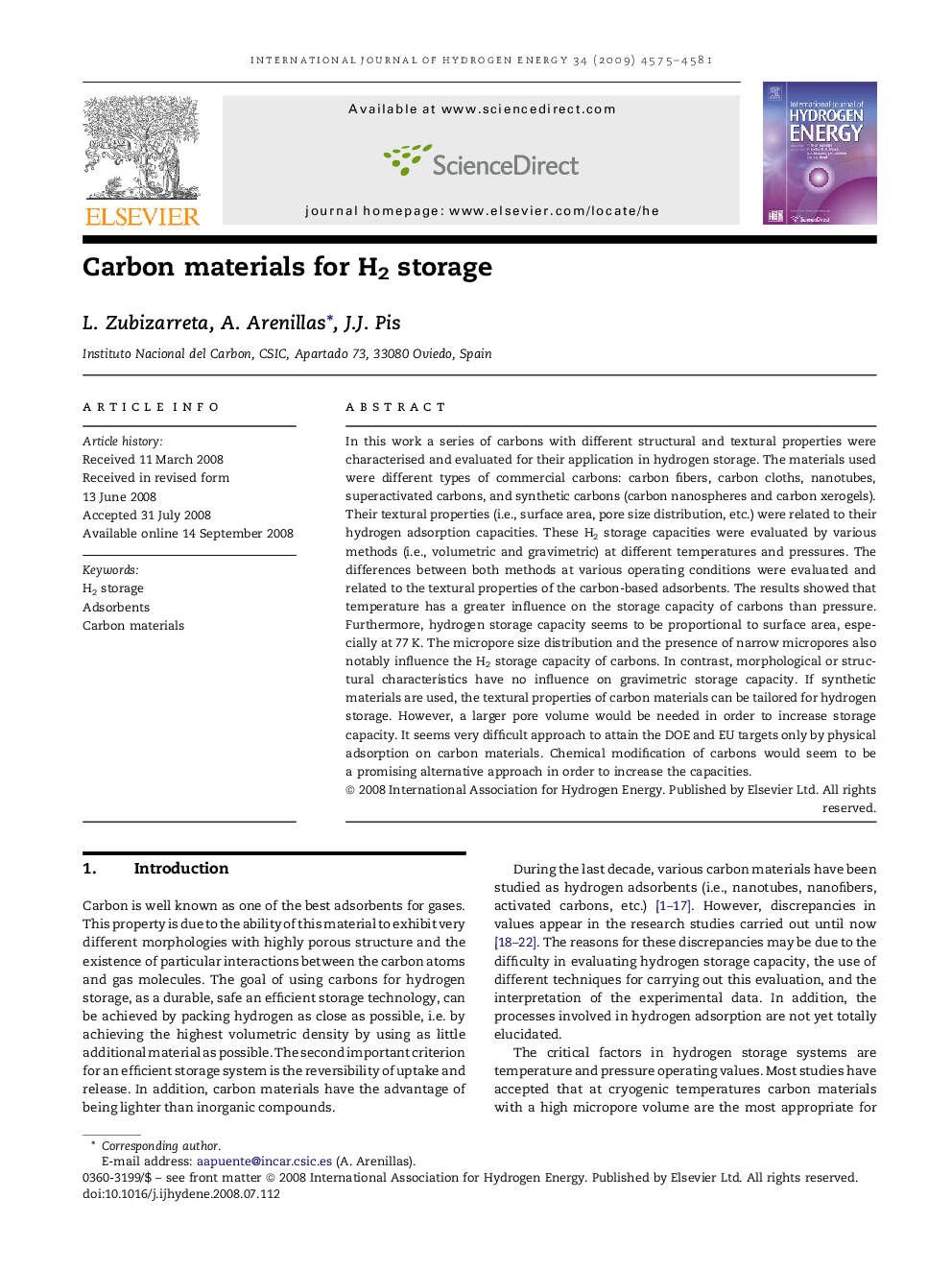| Article ID | Journal | Published Year | Pages | File Type |
|---|---|---|---|---|
| 1273873 | International Journal of Hydrogen Energy | 2009 | 7 Pages |
In this work a series of carbons with different structural and textural properties were characterised and evaluated for their application in hydrogen storage. The materials used were different types of commercial carbons: carbon fibers, carbon cloths, nanotubes, superactivated carbons, and synthetic carbons (carbon nanospheres and carbon xerogels). Their textural properties (i.e., surface area, pore size distribution, etc.) were related to their hydrogen adsorption capacities. These H2 storage capacities were evaluated by various methods (i.e., volumetric and gravimetric) at different temperatures and pressures. The differences between both methods at various operating conditions were evaluated and related to the textural properties of the carbon-based adsorbents. The results showed that temperature has a greater influence on the storage capacity of carbons than pressure. Furthermore, hydrogen storage capacity seems to be proportional to surface area, especially at 77 K. The micropore size distribution and the presence of narrow micropores also notably influence the H2 storage capacity of carbons. In contrast, morphological or structural characteristics have no influence on gravimetric storage capacity. If synthetic materials are used, the textural properties of carbon materials can be tailored for hydrogen storage. However, a larger pore volume would be needed in order to increase storage capacity. It seems very difficult approach to attain the DOE and EU targets only by physical adsorption on carbon materials. Chemical modification of carbons would seem to be a promising alternative approach in order to increase the capacities.
